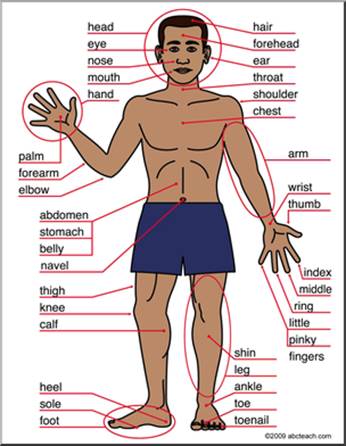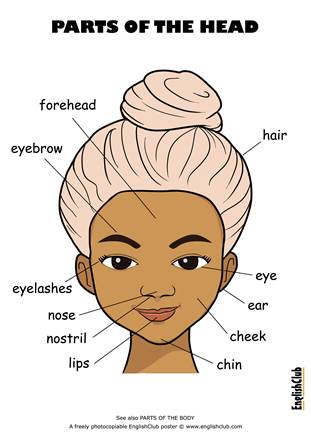Young Adult Health. Healthy Body. Tattoos.
Warming up
What do you think?
1) What is a heathy way of life? What components does this concept have.
2) Is your way of life healthy? What do you do to preserve your health and to keep fit?
3) If there are some health problems (having got an illness or feeling unwell) what do you usually do? Do you go to hospital?
4) What is your attitude to drugs (medication)? Do you often take pills or prefere alternative medicine?
Health
Vocabulary
| Body and its processes: Eyelid – глазное веко Hip - бедро Bone - кость Muscle - мышца Rib - ребро Spine – позвоночник PAP = pulmonary artery pressure – давление лёгочной артерии Blood pressure – кровяное давление Blood transfusion – переливание крови Symptoms: Bruise - синяк Rash - сыпь Nausea – тошнота, морская болезнь Heart murmur – сердечный шум Wheezing – дыхание с хрипами Sore throat – воспалённое горло Itching – зуд Seizure - приступ Nutrition: Fat - жир Carbohydrate - углевод Protein - белОк Junk food – мусорная еда (часто о фаст фуде) Takeaway – (еда, напитки) на вынос/ с собой At the doctor’s: Surgery – приёмная врача Chemist’s = pharmacy - аптека Prescription - рецепт Appointment - приём | Medical tools and objects, medication: Mercury - ртуть Cream - крем Ointment/ liniment (liquid) –мазь First-aid kit – аптечка Wipe – влажная салфетка Sterile gauze – стерильная марля Tweezer – пинцет, щипчики (мн.) Crutches - костыли Cane – трость (для ходьбы) Stent - стент (проволочный каркас или пористая трубочка, вводимые в проток для предотвращения его сужения, закупорки) Pacemaker – зд., электронный стимулятор сердца Hydrocortisone - гидрокортизон (стероидный гормон, секретируемый корой надпочечников) Rhogam – иммуноглобулин человека, применяется для профилактики резус-конфликта у резус-отрицательных женщин Pheumovax - пневмококковая полисахаридная вакцина Medical operations: Angioplasty – пластика сосудов Intubation – интубация, зондирование (введение трубки) Prosthesis – протезирование | Illness and disease: Illness - болезнь Disease – заболевание Wound - рана Injury – травма Cancer - рак Hangover - похмелье Poisoning – отравление Obesity – ожирение Hiatal hernia – грыжа пищеводного отверстия Ulcer - язва Tumor - опухоль Chicken pox – ветряная оспа Measles - корь Mumps – свинка (болезнь) Hives – крапивница History of Von Willebrand - ангиогемофилия, конституциональная тромбопатия, болезнь Виллебранда - Юргенса Verbs: To sneeze - чихать To examine – обследовать, осматривать To vomit - рвать To be sick - рвать To feel sick - тошнить To cough - кашлять To cut - порезать To bleed - кровоточить To burn - обжечь To reject - отклонить To blame - обвинять To threaten - угрожать Adjectives: Congestive – застойный (напр., бронхит) Addictive – вызывающий привыкание Adhesive – липкий, клейкий Malignant - злокачественный Swollen - опухший |


Phonetic exercises
Some words may seem difficult for you to pronounce. Train and try to remember the right pronunciation
/ɔ/ - prosthesis, vomit, cough, swollen
/ɔ:/ - sore, gauze, nausea
/ɔƱ/ - bone, hangover, protein, throat
/ɔı/ - poisoning, ointment, appointment
/ʌ/ - muscle, ulcer, blood, junk, mumps, cut
/aı/ - spine, carbohydrate, eyelid, sterile, wipe
/ı/ - rib, illness, malignant, hip, addictive
/ı:/ - sneeze, bleed, cream, tweezer, measles, wheezing, disease
/eı/ - blame, takeaway, aid, pacemaker
/æ/ - rash, fat, cancer, examine
/e/ - threaten, evidence, adhesive, obesity, reject, chemist
/Ə:/ - surgery, burn, murmur, mercury
/u:/ - bruise, tumor, wound
/ʃ/ - pressure, prescription, intubation
/tʃ/ - itching, crutches
/ʒ/ - seizure, transfusion
/dʒ/ - injury, congestive









Reading
Before reading:What is your attitude to tattoos? Have you got one or would you like to have one? What are your reasons for or against?
Read the text and say, are the reasons given in it similar to yours. Have you changed your mind or not? Why?
Young Adult Health. Healthy Body. Tattoos.
In Western culture tattoos are often seen as something associated with people on the edge of society. Since the early 90s, however, tattooing became more common and socially acceptable in Australia.
Although more people these days seem to have tattoos, getting one still carries some risks.
There are many reasons why people choose to have a tattoo on their body, including:
· Cultural reasons – i.e. coming of age or rites of passage
· To express individuality
· To indicate membership of a particular group or way of life
· To make a statement
· To establish a permanent reminder of an event – such as the death of a loved one
· To reclaim the body after an event – for example, a sexual assault
· To make the body more pleasing to their eye
· To annoy parents?
It seems that getting a tattoo can make someone look like an individual or a conformist, depending on your view. People have been known to get tattoos as an impulsive act, perhaps when they were intoxicated - and they may or may not regret it later when they are sober.
Getting a tattoo at an accredited professional tattoo parlour is relatively risk-free, but getting a tattoo still puts you at risk of the following:
- serious infectious diseases such as hepatitis C, hepatitis B or HIV (which are passed on via infected blood or other body fluids), or tetanus
- skin infections such as impetigo (‘school sores’)
- dermatitis
- flare ups of existing eczema
- allergic reactions
- thick scars called keloids (you are more likely to get these if you have dark skin)
- distress due to regret after the procedure - this has been identified as one of the main problems after getting a tattoo.
Tattooing is a painful process, and tattoos are expensive and so is getting them removed. If you want to have a tattoo removed there will always be a scar.
You need to carefully consider the reasons behind your need to get a tattoo before going through with it. Trends come and go, but a badly chosen tattoo lasts forever, or costs a lot to remove.
If you do decide to get a tattoo, you need to go to a qualified professional. Home-made tattoos, such as those made with Indian ink, should never be considered.
When choosing a tattoo artist you should make sure of the following:
· that the tattoo parlour uses new sterile equipment for each client, or thoroughly cleans and sterilises equipment (e.g. by using an autoclave)
· that standard precautions are followed to reduce risks of infections, as used in many places, including hospitals. Can they show you how they keep clients safe?
· that the tattoo artist has credentials, a licence and references
· that the tattoo parlour looks clean, safe and professional. You should use your judgment and keep away from a parlour that seems dodgy.
If the tattoo artist is a professional, then he or she will be happy to show you the ways in which their workplace adheres to standard safe practices. If they are uncooperative or give you a hard time because of your requests, simply leave – they do not deserve your trust or your business.
Emergencies:
Here are some English phrases and exclamations for use in emergencies and other difficult situations. Hopefully you won't need to use them!
Note that in a genuine emergency, you can contact the emergency services in the UK by calling 999; the number to call in the USA and Canada is 911.